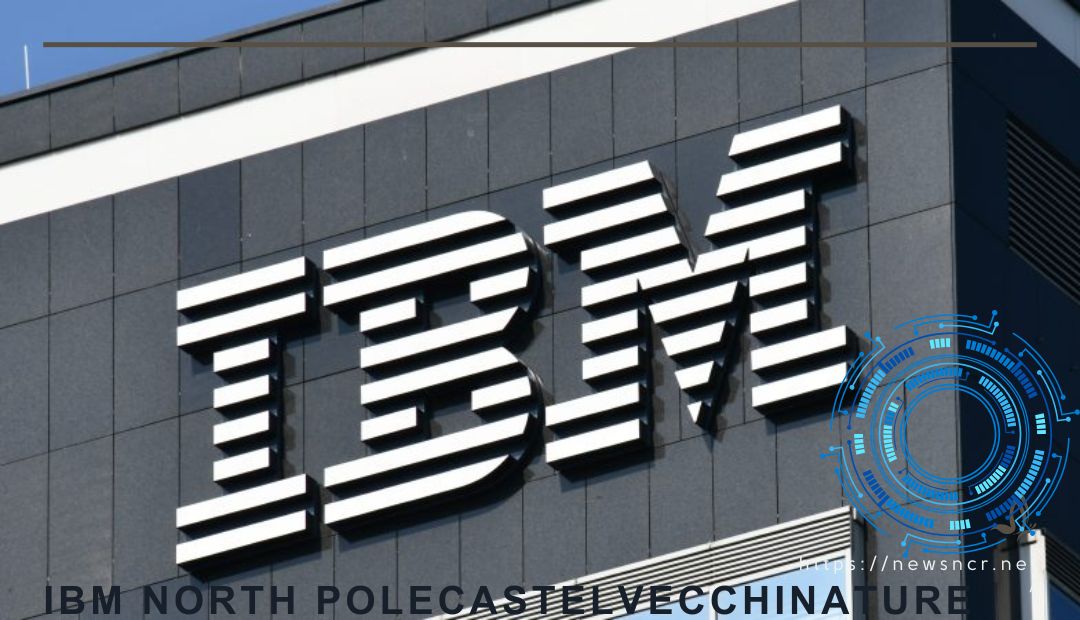IBM northpolecastelvecchinatureis an innovative project that shows technology can coexist with environmental stewardship in an environmentally responsible manner. This unique initiative explores how cutting-edge tech connects with natural ecosystems for a more sustainable future.
NorthPole chip’s sophisticated design and performance capabilities offer a glimpse of AI hardware’s future, where energy efficiency and computational power coexist seamlessly. In this article we explore its practical applications to showcase its transformative impact.
Key Areas of Focus of IBM Northpolecastelvecchinature
From its groundbreaking AI capabilities to its groundbreaking brain-inspired design, IBM NorthPole chip represents a paradigm shift in technology. This blog post highlights its key characteristics and discusses how they can enhance numerous applications.
The NorthPole chip integrates computing and memory onto one core, eliminating the Von Neumann bottleneck that limits AI performance. Furthermore, its precision and performance capabilities enable it to handle complex data efficiently.
NorthPole chip is also exceptionally energy efficient, capable of performing complex AI tasks at speeds that far outstrip existing processors while using significantly less power – helping reduce operational costs while contributing to greener technology landscape. Castelvecchi explores this aspect of NorthPole in detail to show its benefits in supporting sustainable development without jeopardizing ecological balance.
Predictive Climate Modeling of IBM Northpolecastelvecchinature
As climate change becomes an ever more pressing concern, IBM Northpolecastelvecchinature has taken the initiative to develop technologies to promote environmental sustainability. By emphasizing artificial intelligence (AI), renewable energy, smart cities and sustainable agriculture practices; this initiative is helping reduce carbon footprint globally.
The Northpolecastelvecchinature project employs cutting-edge technology to advance environmental monitoring and research. The platform’s advanced data analytics and artificial intelligence provide invaluable support in analyzing vast ecological conditions and climate patterns data sets for researchers and policymakers who wish to identify trends that support environmental conservation efforts.
Additionally, this platform empowers local communities to contribute data and observations. Through participation, this initiative seeks to foster grassroots movements focused on environmental stewardship and sustainability.
Partnerships and Global Impact IBM Northpolecastelvecchinature
IBM Northpolecastelvecchinature stands out in an age when technology and the environment often seem at odds, by merging cutting-edge tech with environmental stewardship. Leveraging advanced data analytics, AI, and IoT technologies IBM is creating solutions to some of today’s toughest issues through this project.
Predictive climate modeling from Earth sense helps policymakers and environmental organizations develop effective strategies to mitigate climate change impacts, while their ocean health platform identifies endangered marine species and protects delicate marine ecosystems.
Furthermore, it offers farming tools that reduce water, fertilizers, and pesticide use, thus decreasing waste while creating a more sustainable food system. Furthermore, marketing translation services help the company deliver culturally appropriate content to its global audience.

Empowering Local Communities of IBM
IBM’s green project strives to achieve a balance between technological innovation and environmental responsibility. Utilizing artificial intelligence, IoT sensors, and data analytics solutions, the initiative utilizes artificial intelligence tools and methods such as water management optimization for improved energy efficiency as well as reduced greenhouse gas emissions for sustainable wildlife habitat protection.
IoT technology holds tremendous promise to transform several industries, such as healthcare, agriculture and automotive. For instance, sensors could gather information on air quality and weather patterns to assist healthcare planners and help prevent diseases while simultaneously helping farmers reduce waste and increase crop yields.
This eco-friendly initiative by IBM includes installing renewable energy sources at data centers and other facilities as well as using environmentally-friendly materials and working with groups to minimize harm to wildlife and ecosystems.
Exploring the Impact of IBM
IBM technology is helping protect the environment and build a more sustainable future, through environmental monitoring, biodiversity conservation, climate change mitigation, and building connections between people and nature.
IBM is known for using innovative technology to transform its business operations and increase growth, earning them significant success and recognition from customers and peers alike. Unfortunately, however, cutting costs became limited without negatively affecting operations or production.
As such, IBM had to adjust quickly when new technologies emerged during the 1980s and 1990s. Desktop computers and Unix open systems provided cost-effective alternatives to mainframes; additionally, these innovations eliminated costly consultant services to develop software and hardware for IBM systems.
IBM Northpolecastelvecchinature Advancement
At IBM Northpolecastelvecchinature, innovative technology meets nature in harmony. This project brings advanced tech together with environmental stewardship efforts in an attempt to address key global issues like climate change and biodiversity conservation.
The NorthPole chip is a breakthrough advancement in AI hardware, featuring outstanding performance and energy efficiency. Its groundbreaking design has caused great excitement from industry leaders and experts.
Exploring IBM Northpolecastelvecchinature
At the intersection of cutting-edge technology and environmental stewardship lies IBM Northpolecastelvecchinature: an ambitious project proving that both nature and tech can coexist harmoniously. Utilizing AI, IoT, and data analytics techniques to address environmental concerns like habitat protection and water scarcity.
This platform integrates satellite imagery, ground-based sensors and historical climate data to provide a comprehensive picture of Earth’s ecosystems. This approach empowers researchers, policymakers, and environmental organizations to take effective steps against climate change.
IBM can efficiently process vast amounts of data at high performance levels with the North Pole chip, enabling it to recognize patterns in complex data sets and identify anomalies while anticipating future behaviors. Furthermore, this chip adapts to multiple layers of neural networks for improved performance and precision.
The Role of IBM NorthPoleCastelvecchiNature
The NorthPole chip represents a remarkable advancement in AI hardware. With its advanced design and energy-saving properties, its advanced energy consumption will change many industries and Castelvecchi’s exploration of it reveals its significant effect on AI applications ranging from improving image recognition in autonomous vehicles to healthcare data analysis.
IBM NorthPoleCastelvecchinature also strives to enhance environmental monitoring. By employing IoT sensors, drones, and satellites as part of its ecosystem monitoring efforts, this initiative collects an array of environmental data points – deforestation rates, species migration patterns, water quality measurements etc.
The project also promotes a circular economy that reduces waste while making full use of existing resources. This approach helps decrease raw material use that contributes to climate change, as well as lessening our need for new energy sources – leading towards a more sustainable future.
The Vision Behind IBM Northpolecastelvecchinature
IBM Northpolecastelvecchinature is a unique project that explores the intersection between cutting-edge technologies and environmental stewardship. By employing data analytics, AI, IoT and other emerging technologies to address pressing global issues such as climate change, biodiversity conservation, sustainable resource management and other pressing global concerns such as sustainability resource management – this initiative stands out.
This project centers on environmental monitoring by collecting data through sensors, drones and satellites. This allows researchers and policymakers to keep an eye on natural ecosystems as well as gain an increased insight into climate change impacts.
IBM’s project also seeks to promote sustainability in farming by equipping farmers with AI-powered tools that help maximize crop yields while limiting water usage, fertilizer consumption and pesticide applications.
Furthermore, this project promotes a circular economy by reducing waste and raw material needs while simultaneously working to promote renewable energy sources and minimize carbon emissions.
The Role of IoT in Environmental Monitoring
IBM Northpolecastelvecchinature’s AI and IoT technologies are transforming our collective approach to environmental stewardship, offering tools for assessing ecosystem conditions and supporting communities to take action.
Connected IoT sensors can monitor air and water quality, waste management, energy consumption, climate patterns and weather forecasting to promote more sustainable practices. These data allow ESG and Ethics & Compliance stakeholders to better comprehend environmental conditions while shifting towards more eco-friendly practices.
IoT sensors have become invaluable tools in agriculture for monitoring soil moisture and temperature for more sustainable farming techniques. Businesses also utilize IoT sensors to track water consumption and emissions against regulatory standards – real-time monitoring allows businesses to take swift action before issues escalate; helping reduce facility costs while avoiding potentially expensive penalties for environmental violations.
The Future of IBM Northpolecastelvecchinature
The NorthPole chip stands to revolutionize artificial intelligence and computing, performing complex AI tasks at speeds that outstrip current architectures while using significantly less power. This remarkable achievement has elicited enthusiastic reactions from industry leaders and experts, prompting Castelvecchi’s exploration of them in detail – it underlines how important it is that technological innovations align with environmental goals in order to prevent ecological imbalance.
IBM Northpolecastelvecchinature not only uses eco-friendly materials in their facilities, but they also support renewable energy with IoT sensors monitoring temperature, air quality and energy consumption to allow real-time adjustments to reduce emissions and save resources. Furthermore, their support of sustainable farming helps farmers reduce water, fertilizers and pesticide usage for reduced emissions and savings in resources.




